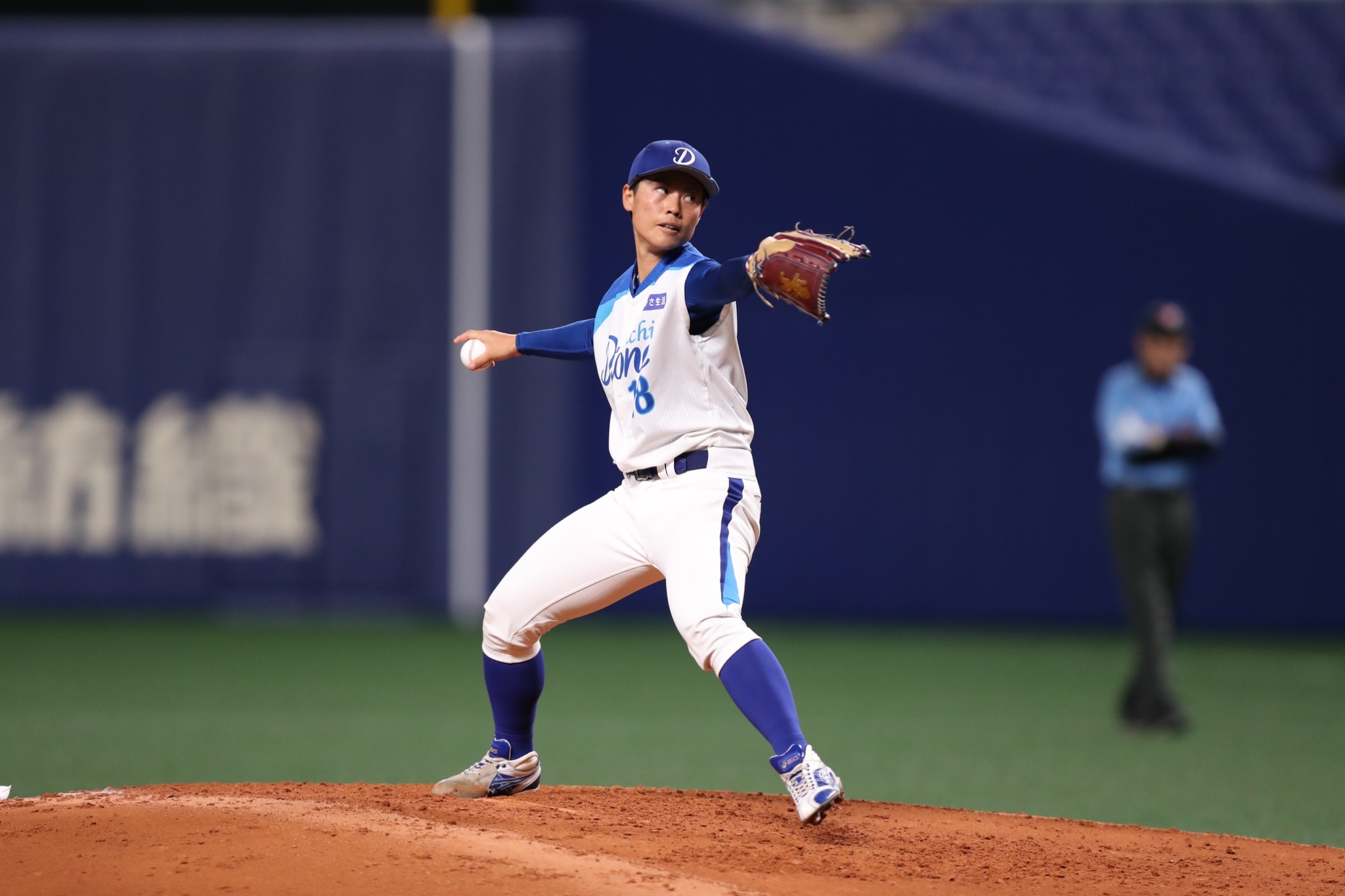Queen of Diamonds: Japanese Women’s Baseball League’s star pitcher Ayami Sato
(Courtesy of Japanese Women’s Baseball League)
Meet the best women’s baseball player in the world.
Not many girls dream of becoming professional baseball players. Why strive for a career that isn’t really an option for women?
That was the case for Ayami Sato. Ayami began playing baseball at age 6, but she never thought she could play professionally simply because the opportunity didn’t exist.
But that changed in 2009 with the founding of the Japanese Women’s Baseball League (JWBL). “I heard about the league during a time when I was worried that I would have to keep playing baseball in an unfair environment designed for men,” she said in an interview.
The Japan national women's team celebrating after Ayami pitched a two-hit shutout to win the 2016 Women’s Baseball World Cup. (Courtesy of WBSC)
Now a veteran pitcher, Ayami is “the best women’s baseball player in the world,” according to Baseball America. She has the stats to back it up, too. The 28-year-old right-hander led the league in wins and ERA (earned run average) in 2016 and has twice been named Most Valuable Player at the Women’s Baseball World Cup.
Japan’s national women’s baseball team is the best in the world — they are the five-time reigning World Cup champions. And the team continues to dominate because Japan has the only professional baseball league for women in the world. In other countries, women’s baseball is just a hobby.
The JWBL began after Kenichi Kakutani, president of a health food company in Japan, attended a girls’ high school baseball tournament. He was so impressed by the players’ athleticism and ambition that he sought to create a place for them to play professionally.
(Courtesy of Japanese Women’s Baseball League)
In its first year, the league had two teams and has since doubled in size with 70 players in total, according to Kana Kawabata, a spokesperson for the league. Four Taiwanese players joined the league this season with hopes of opening the door for future international recruits. Together, JWBL athletes are showing a generation of girls that they too can have a job that was once restricted to men.
“I have had a lot of opportunities to meet girls who play baseball since I turned professional. They say to me ‘I admire you,’ ‘I want to be like you!’ That makes me see myself as a role model. And I can strongly feel the importance of making a better environment for those girls,” Ayami says.
Girls need role models like Ayami as much as they need education and skills to succeed in whatever career they choose. A lack of women holding prominent positions — whether on the pitcher’s mound or CEO — can prevent girls from seeing a future for themselves in those roles.
Despite creating opportunities for women in baseball, Japan still lags in achieving gender equality. Women hold just over 10% of seats in Japan’s lower parliament (a stat that contributed to the country’s surprisingly low ranking of 114 out of 144 in the World Economic Forum’s Global Gender Gap Report in 2017). Limited access to childcare, lower wages and patriarchal bias further hold girls and women back in their professional lives.
Still, Ayami plans to continue changing the narrative for women in the field she can control: baseball. She is proud that because of JWBL, “girls can now dream of becoming a professional baseball player.”
Ayami hopes to take the league a step further: “My dream is to make women’s baseball popular. I want to fill stadiums.”
 Read more
Read more












